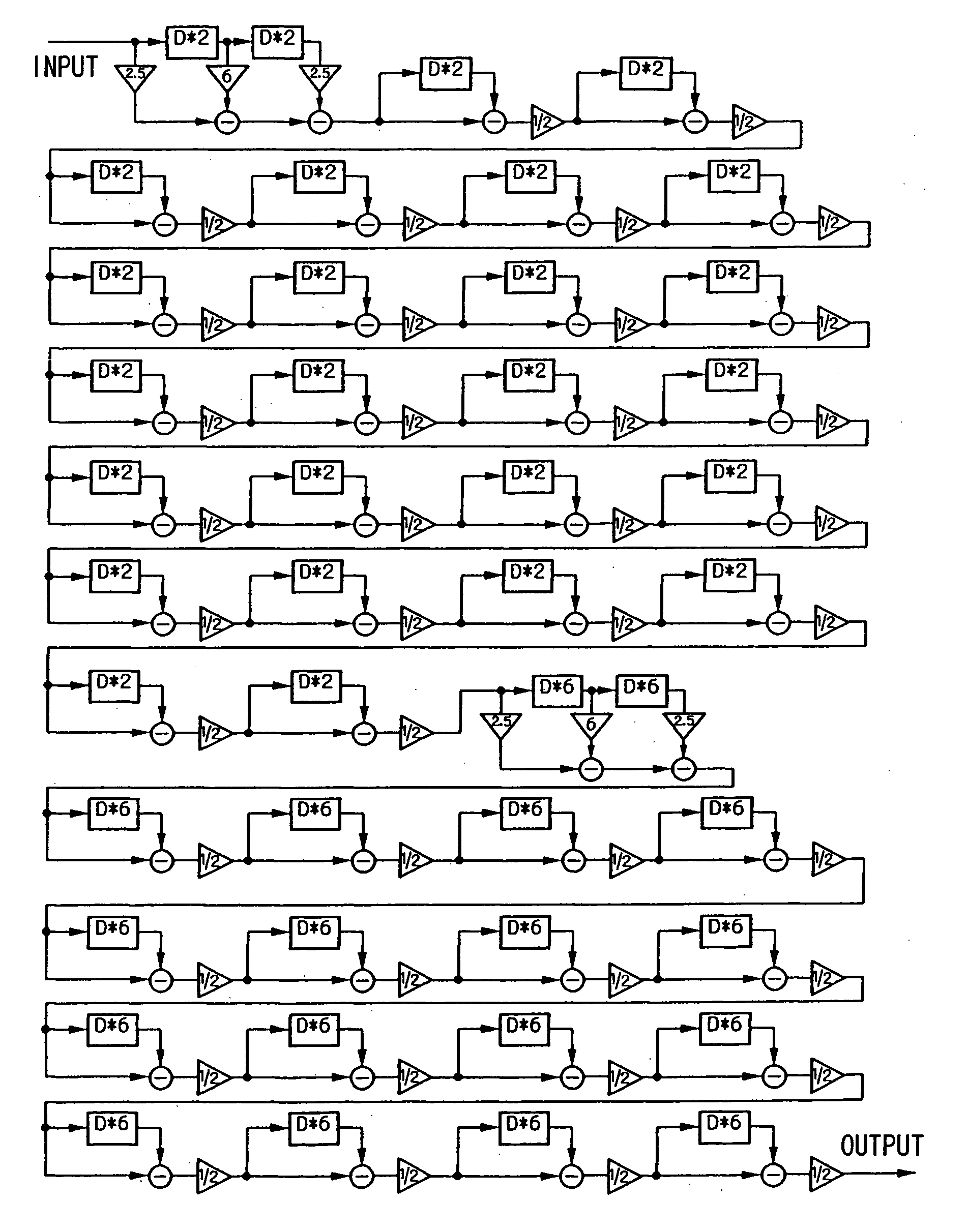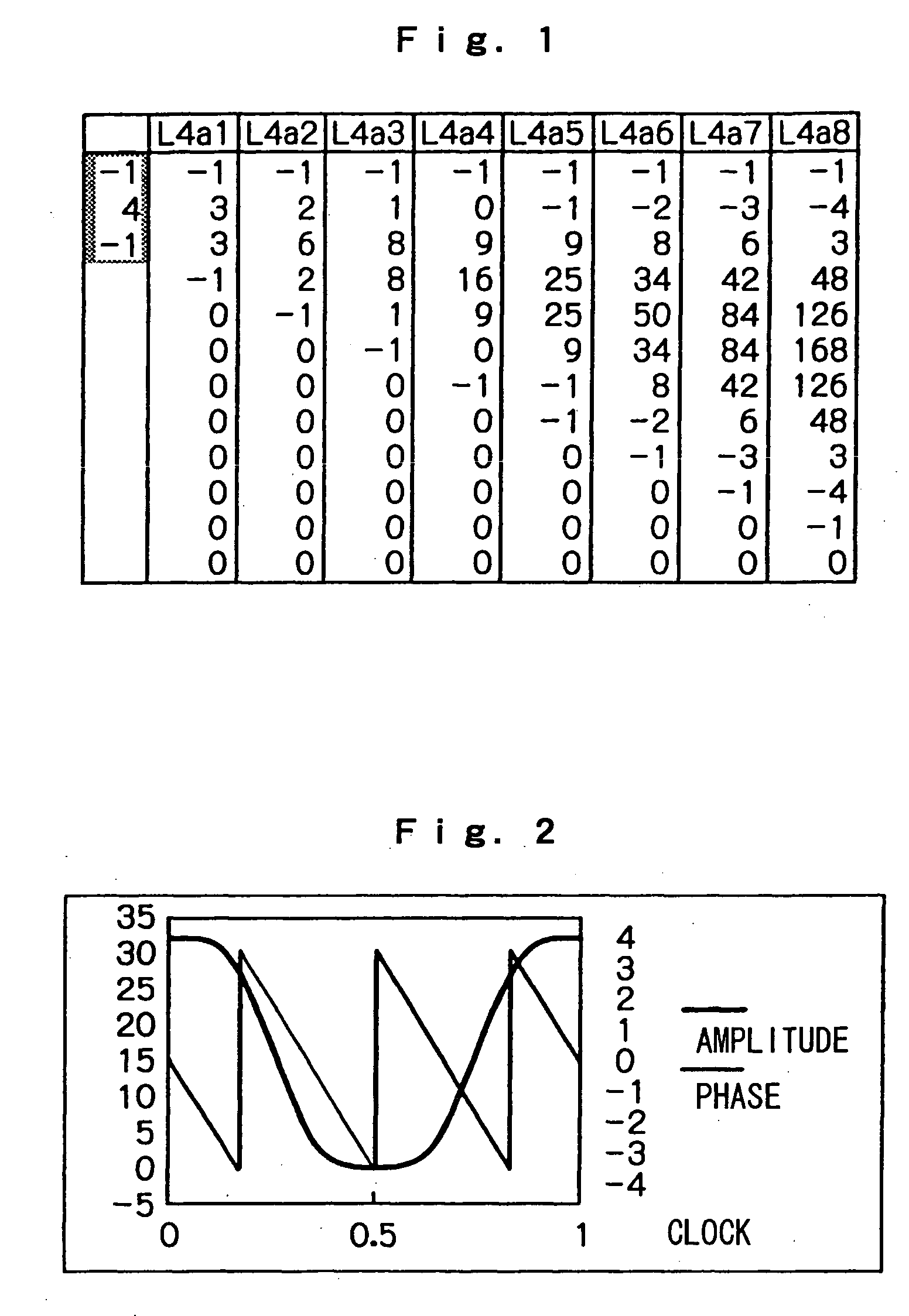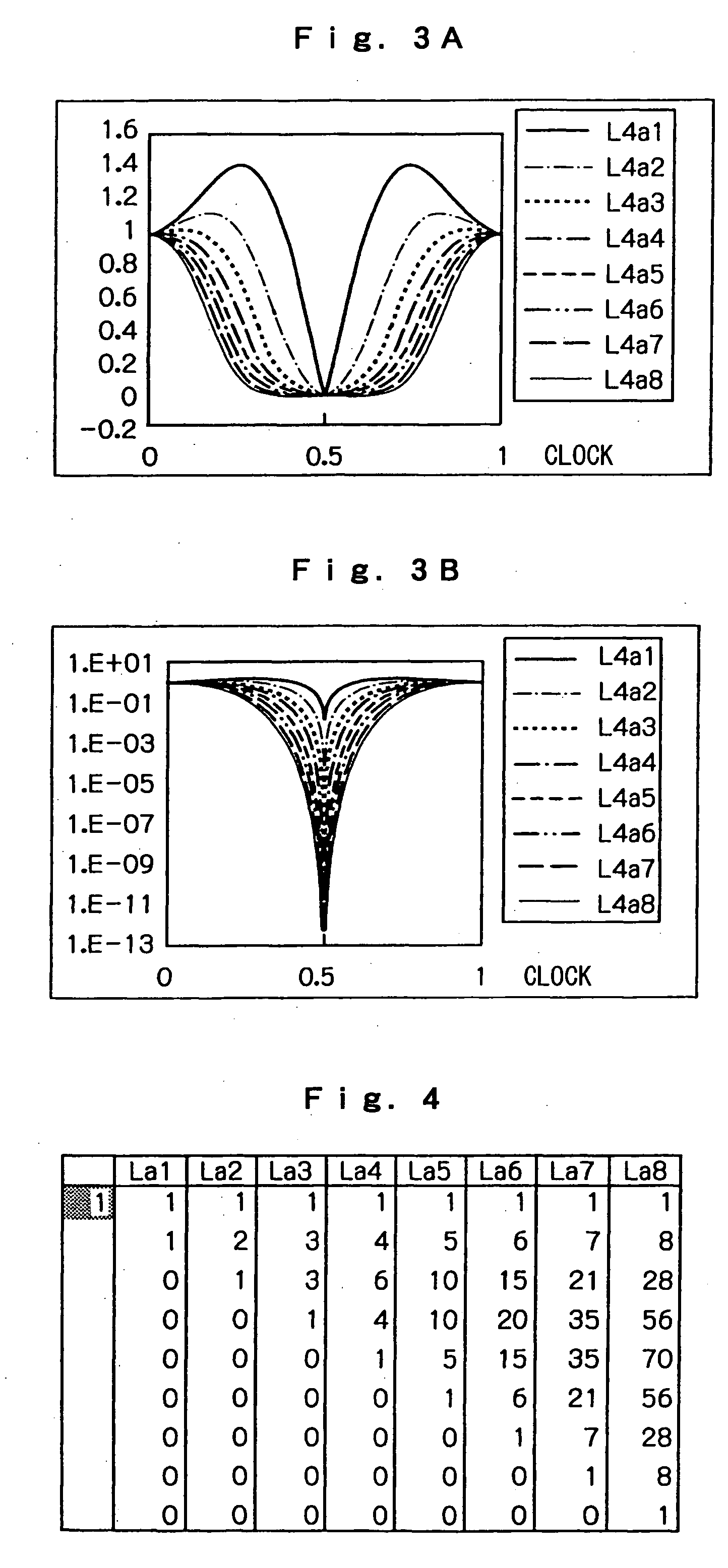Digital filter design method and device, digital filter design program, digital filter
a filter circuit and design method technology, applied in the field of digital filter design methods and devices, digital filter design programs, digital filters, can solve the problems of difficult to set window functions or approximate expressions appropriately, difficult to obtain preferable target frequency characteristics, and large number of taps and multipliers of filter circuits, so as to reduce the number of taps and multipliers, the structure of the digital filter is extremely simple, and the effect of reducing the number of multipliers
- Summary
- Abstract
- Description
- Claims
- Application Information
AI Technical Summary
Benefits of technology
Problems solved by technology
Method used
Image
Examples
Embodiment Construction
[0055] With reference now to the attached drawings, an embodiment of the present invention will be explained below. Noting an aspect that a convolution of impulse responses corresponds to summation of frequency responses in the impulse response on the time axis and a frequency characteristic on the frequency axis correlating with each other, this embodiment provides a completely new filter design method which is fundamentally different from a conventional design method which takes a calculation of filter coefficients as a starting point, and a digital filter which is a product thereof.
[0056] That is, this embodiment defines several types of basic filters having specific impulse responses and realizes an FIR filter having a desired frequency characteristic in the form of cascade connecting the basic filters in an arbitrary way. The basic filters can be roughly divided into three types; basic low pass filter, basic high pass filter and basic band pass filter (including a comb-shaped ...
PUM
 Login to View More
Login to View More Abstract
Description
Claims
Application Information
 Login to View More
Login to View More - R&D
- Intellectual Property
- Life Sciences
- Materials
- Tech Scout
- Unparalleled Data Quality
- Higher Quality Content
- 60% Fewer Hallucinations
Browse by: Latest US Patents, China's latest patents, Technical Efficacy Thesaurus, Application Domain, Technology Topic, Popular Technical Reports.
© 2025 PatSnap. All rights reserved.Legal|Privacy policy|Modern Slavery Act Transparency Statement|Sitemap|About US| Contact US: help@patsnap.com



